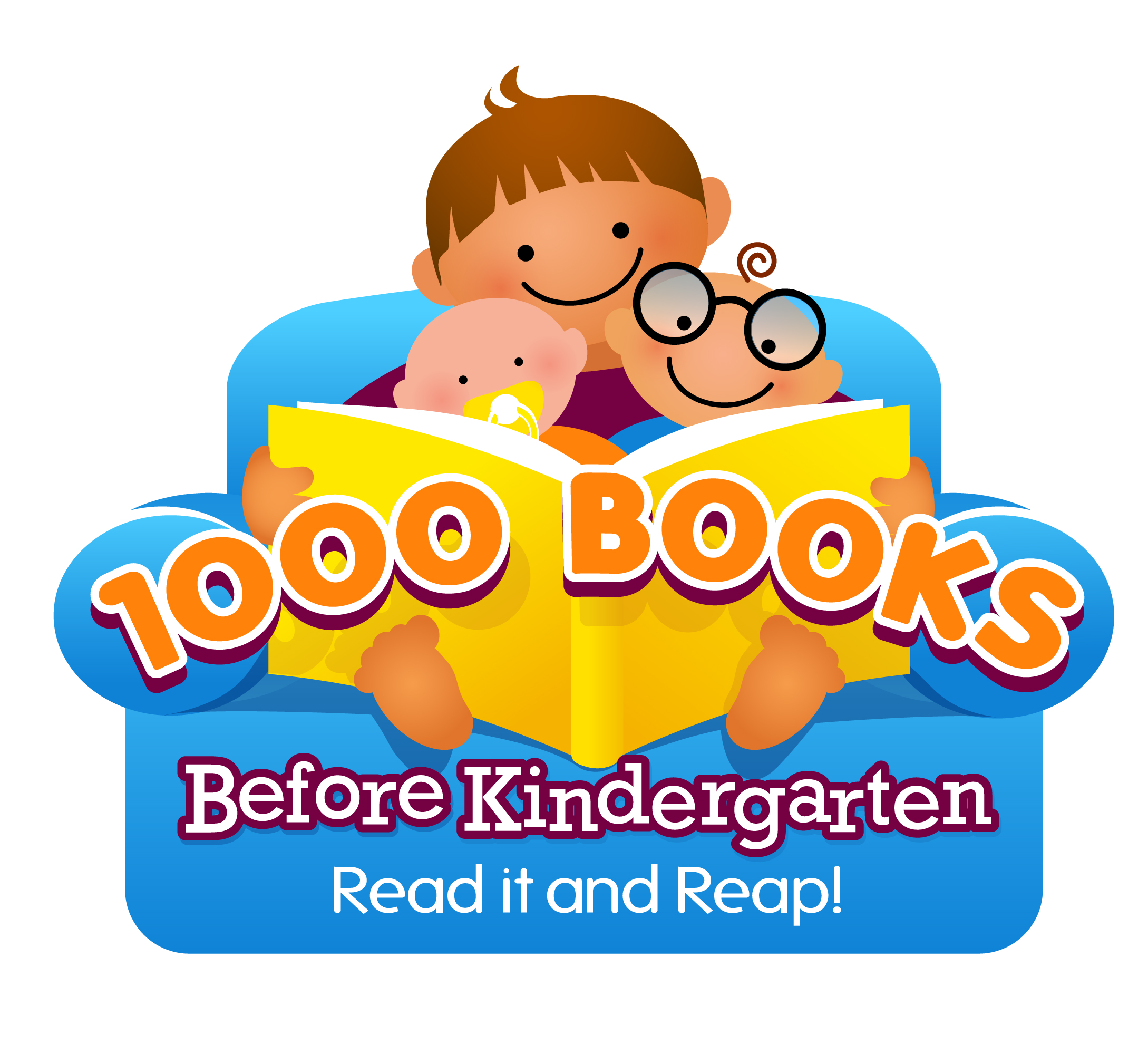1000 Books Before Kindergarten

An innovative and fun approach to establishing early literacy skills!
Ida Grove Library is a proud participant in the 1,000 books before kindergarten program. The concept is simple, the rewards are priceless. Read a book (any book) to your newborn, infant, and/or toddler. The goal is to read 1,000 books (yes, you can repeat books) before your child starts kindergarten. It is easy to participate: just ask for a starter pack at the Circulation Desk, track the books you read on log sheets (or the 1000 Books App) and earn prizes and incentives as you work your way toward reading 1000 books. If you read just one book a day with your child, you’ll reach 1,000 books in less than three years!
Learn more about 1000 Books Before Kindergarten and why reading to children helps them thrive.
Helpful Tips:
Below are some tips you can use to help develop early literacy skills and a love of reading in children
Build Language and Vocabulary Skills
To help build language and vocabulary skills, listen to your child as much, or more than you talk and talk about things your child is already interested in. Use these tips to extend conversations and help your child build vocabulary and language skills:
- Make a conversation longer by adding information or asking follow-up questions
- Use mealtime to ask about and discuss the day’s events
- Use travel time to develop word recognition (do you see a red sign, do you see a yellow bus)
- Re-read familiar stories, and talk about the book
- Follow your child’s lead, and encourage a train of thought he or she already has
- Comment on what your child is doing
- Ask a variety of questions in conversation (Who, What, Where, Why)
Read Aloud with Children
There are many benefits to reading aloud with your child. Reading to young children not only builds a bond between parents/caregivers and children but it exposes children to language they wouldn't otherwise hear. Reading helps develop phonological awareness, inspires imagination, builds background knowledge, promotes empathy, increases a child's attention span, builds brain connections, and enables them to hear richer stories than those they may be able to read on their own. Use these tips to get the most from your reading time:
Things to do before you read a book:
- Read the title, author and illustrator’s name.
- Introduce and teach vocabulary words
Things to do while reading a book:
- Make predictions
- Ask questions
- Answer children’s questions
- Read with enthusiasm
- Use different voices
Things to do after reading a book:
- Use sentence completion opportunities
- Do activities related to the book (retell the story, draw a picture, etc.)
Meaningful Writing
Reading and writing go hand in hand. Help your child with writing by providing ample opportunities to practice writing skills.
Show children how you use writing:
- Writing your name or the child’s name on things
- Making lists of things to do or items to pick up at the grocery store
- Writing a note to mail
- Writing in a diary
- Writing events on a calendar
Provide lots of writing materials:
- Have lots of paper and different kinds of paper available and accessible
- Have lots of pencils, crayons, markers available and accessible
- Provide children with blank books to draw and write in
- Provide children with office forms, phone message pads, smaller notebooks and pocket calendars
Create reasons for your child to write:
- Ask your child to put their name on all artwork or other creations
- Have children make lists of things they want to remember, or simply to imitate you when you write a list
- Ask children to write a note for a sibling, friend, grandparent or child care provider
- Encourage a daily writing experience by giving a diary and having them write in it at a regular time
- Help note children’s schedules on a calendar. What will they be doing this week?
Make writing part of their play:
- Office or home play should include paper and pencils
- A pretend restaurant can include children creating menus and taking orders on notepaper
- If you have a play telephone, put a phone message pad nearby with pencils and encourage notes
- Provide envelopes and paper and encourage letter writing as a way to communicate